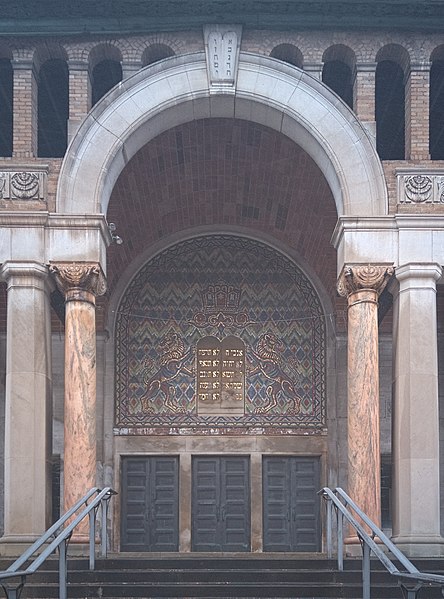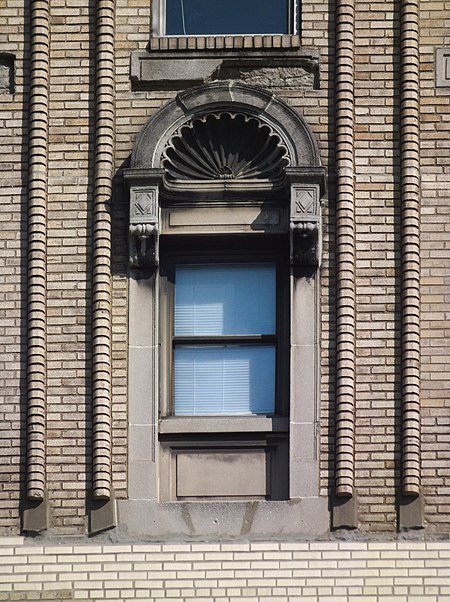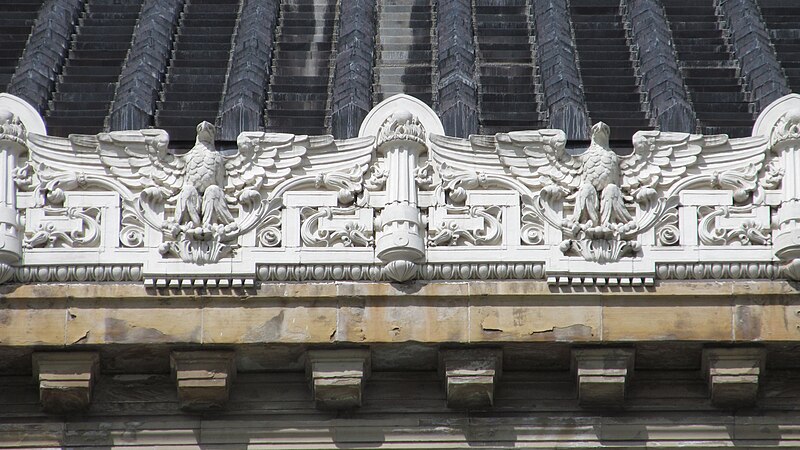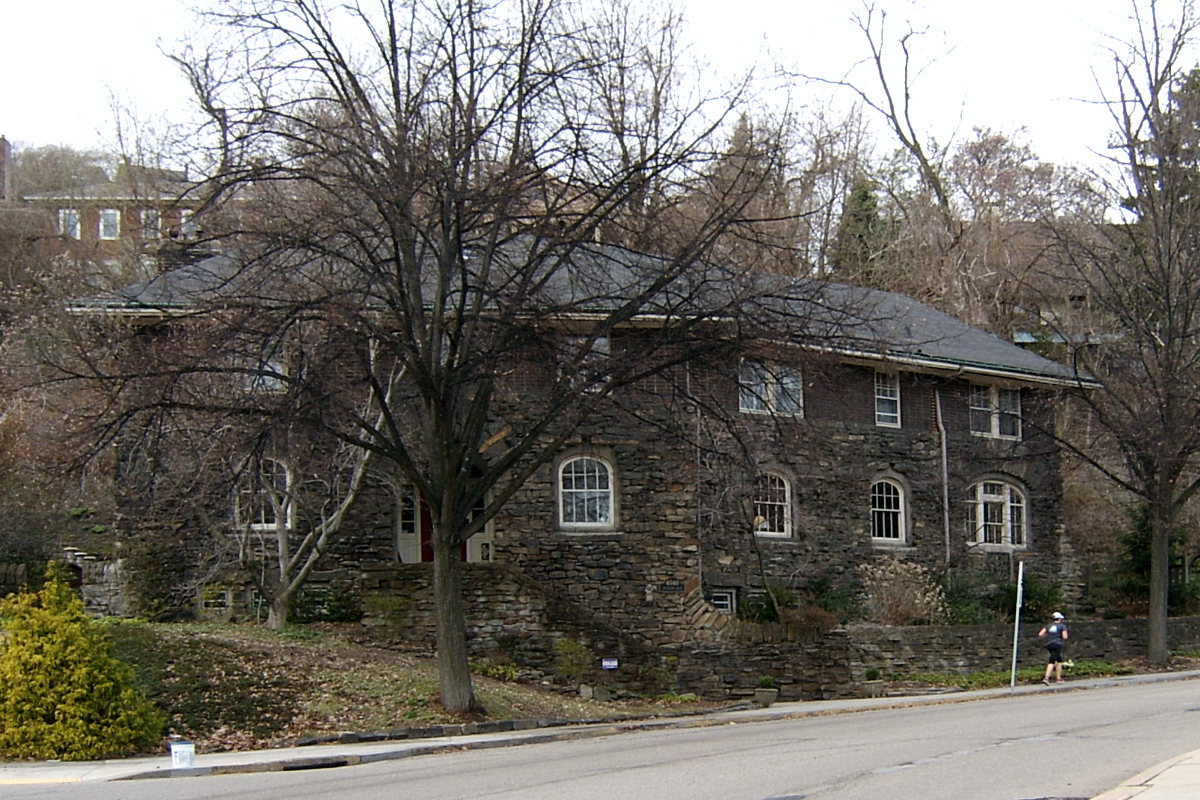
Henry Hornbostel designed two prominent synagogues in Pittsburgh. The still-prospering Rodef Shalom is familiar to everyone, partly because it sits at the eastern end of the Fifth Avenue monument row in Oakland and Shadyside. This one, built in 1923, is perhaps a more adventurous design. Hornbostel used old and new materials and design elements from different traditions to create a building that immediately looked as if it had been there for a millennium or more. After a few years as a school, it is now in the midst of being repurposed as apartments.
Technically, according to the neighborhood border that goes up the middle of Negley Avenue on the city planning map, this building is in Garfield. Socially, it is more associated with East Liberty.

























